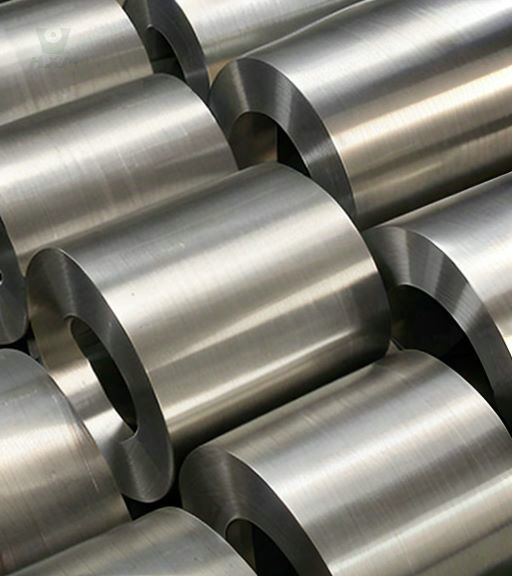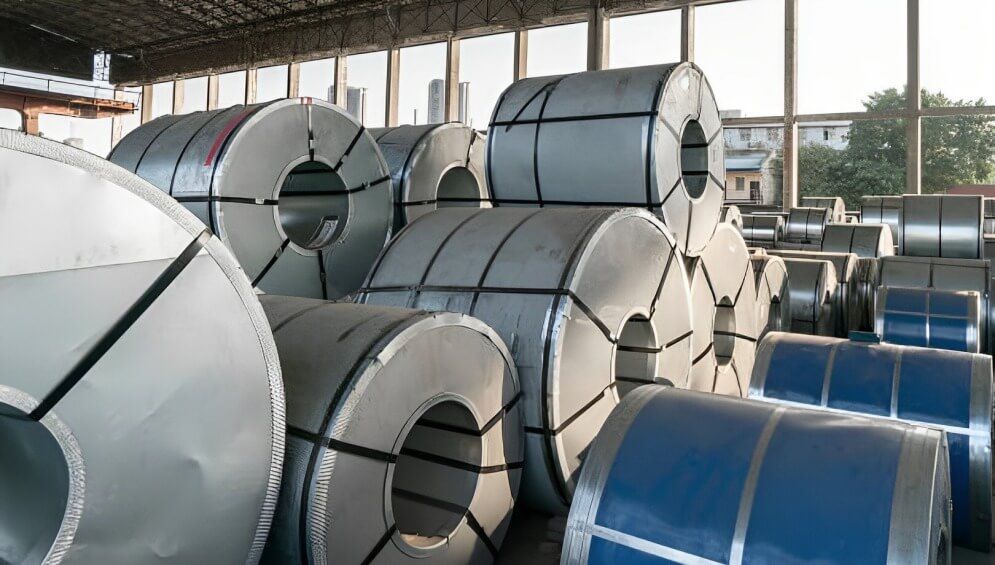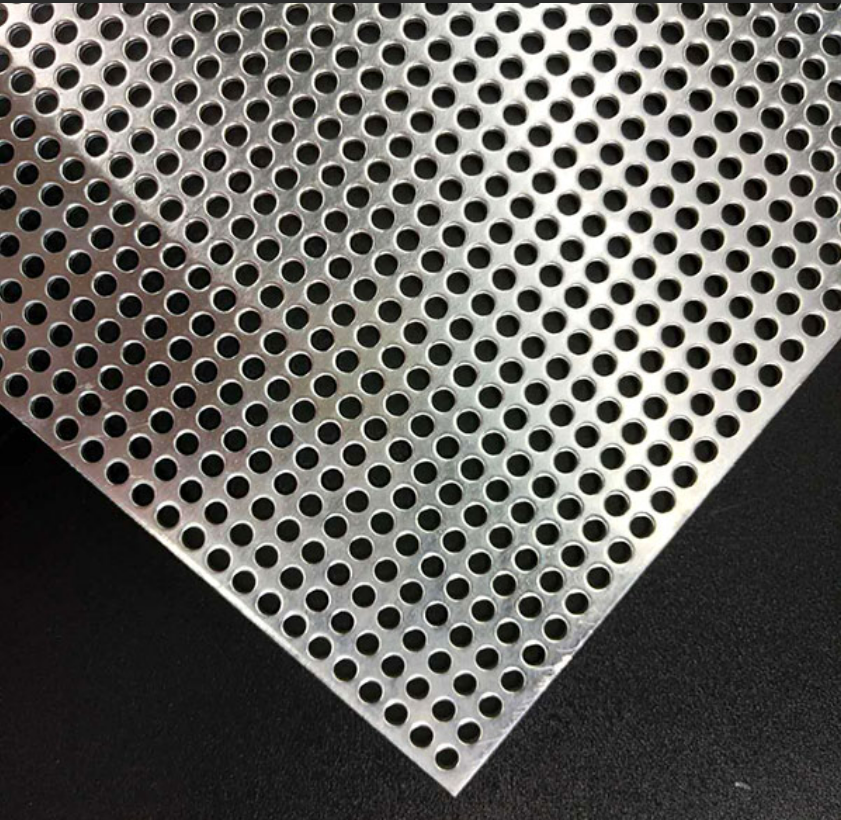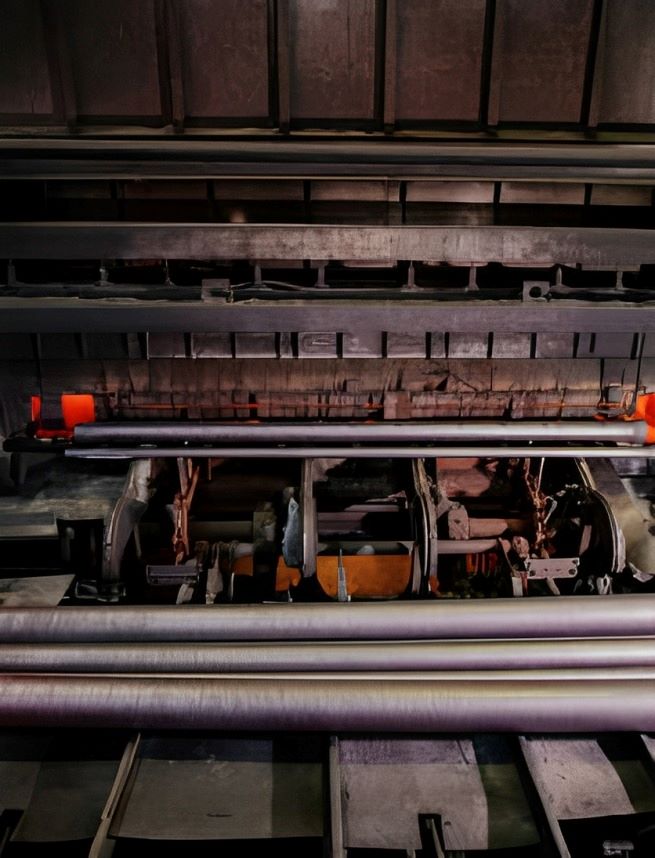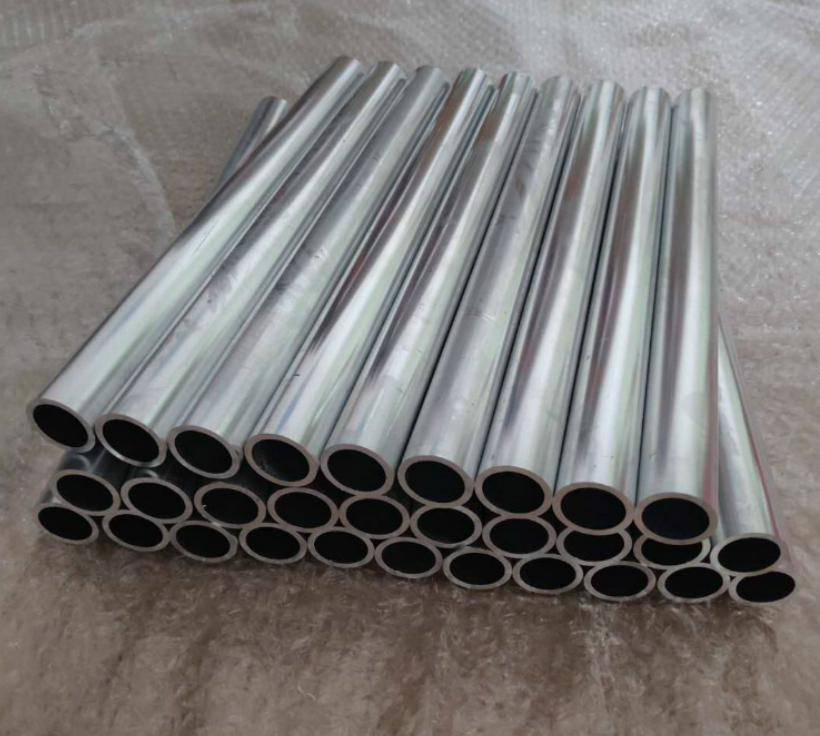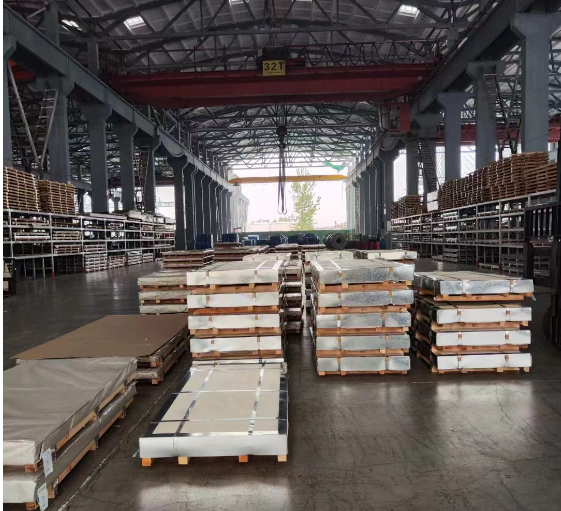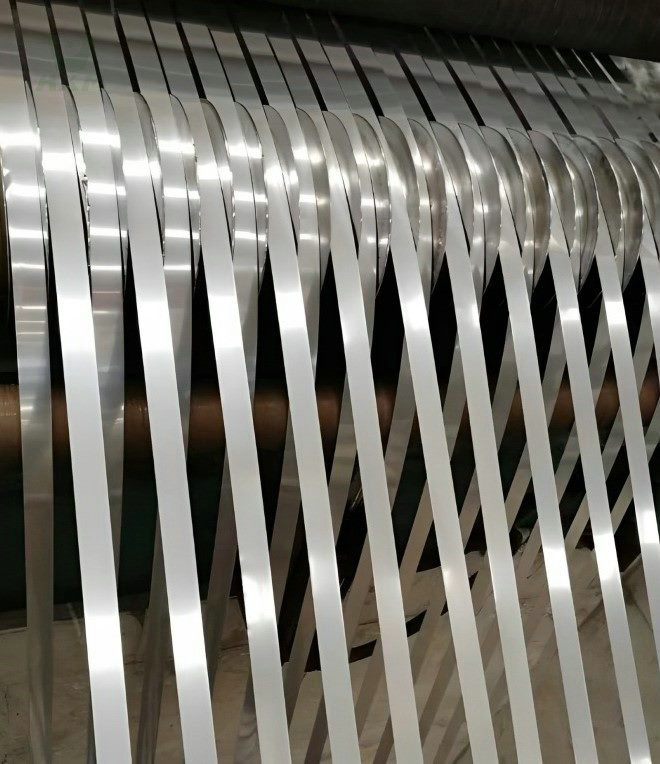
410s Stainless Steel Strip Supplier
- Thickness: 0.03mm – 1.5mm
- Width: 3mm – 600mm, For the wider products pls check in coil products
- Finish: 2B, BA, TR
- TEMPER/Hardness: ANN / Soft, 1/2, 3/4, FH/Full hard, EH, SEH/Super EH
- Coil Diameter /ID: 200mm, 400mm, 510mm, 608mm
- MOQ: 2MT
Production Description of 410s Stainless Steel Strip
410S stainless steel strip is a low carbon stainless steel strip with excellent properties. It has excellent resistance to high temperatures and corrosion and is widely used in many industrial fields. Composed of iron, chromium, nickel and a few other elements, 410S stainless steel strip has good weldability and cold workability. It can withstand the challenges of high-temperature environments and can withstand temperatures up to 900°C. It also exhibits excellent corrosion resistance, being able to resist a wide range of chemicals. This makes 410S stainless steel strip ideal for use in the manufacture of high-temperature equipment and parts for petrochemical, refining and fertilizer production. Whether in terms of high temperature or corrosion resistance, 410S stainless steel strip meets the stringent industrial requirements, ensuring the reliability and durability of products in harsh environments.
As a reliable stainless steel strip supplier, we are committed to providing high quality 410S stainless steel strip products.
Specfication of 410s Stainless Steel Strip
Chemical Componets of 410s Stainless Steel Strip
| 410s | C % | Si % | Mn % | P% | S% | Cr% | Ni% |
| ASTM | ≤ 0.08 | ≤ 1.0 | ≤1.0 | ≤0.040 | ≤0.030 | 11.5-13.5 | 0.6 |
| JIS | ≤ 0.08 | ≤ 1.0 | ≤1.0 | ≤0.040 | ≤0.030 | 11.5-13.5 | 0.6 |
| EN | ≤ 0.08 | ≤ 1.0 | ≤1.0 | ≤0.040 | ≤0.030 | 11.5-13.5 | 0.6 |
| GB | ≤ 0.08 | ≤ 1.0 | ≤1.0 | ≤0.040 | ≤0.030 | 12.0-13.5 | 0.6 |
Mechanical Properties of 410s Stainless Steel Strip
| 410s | T.S.(MPa) | Y.S.(MPa) | EL.(%) | HB |
| ASTM | ≥ 415 | ≥ 205 | ≥ 22 | ≤ 183 |
| JIS | ≥ 410 | ≥ 205 | ≥ 20 | ≤ 183 |
| EN | ≥ 410-530 | ≥ 205 | ≥ 20 | ≤ 183 |
| GB | ≥ 415 | ≥ 205 | ≥ 20 | ≤ 183 |
Physical Properties of 410s Stainless Steel Strip
| 410s | Density (g/cm³) | Melting point (℃) | Thermal conductivity (W/m-K) | Coefficient of thermal expansion (10^-6/K) |
| ASTM | 7.7 | 1480 | 26.1 | 10.2 |
| JIS | 7.7 | 1480 | – | – |
| EN | 7.7 | 1480 | 26.1 | 10.2 |
| GB | 7.7 | 1480 | – | – |
Features of 410s Stainless Steel Strip
410S stainless steel strip has excellent corrosion resistance and is a commonly used stainless steel material. It exhibits excellent resistance to oxidation at high temperatures and is resistant to oxidizing media, making it suitable for a variety of applications in high temperature environments. In addition, 410S stainless steel strip also exhibits good resistance to acid and alkali, and is able to resist erosion by general acidic and alkaline media. It also has some resistance to chloride stress corrosion cracking and is able to maintain good corrosion resistance in certain chloride environments. However, it is important to note that the corrosion resistance of 410S stainless steel strip may vary slightly compared to other low carbon stainless steels or high alloy stainless steels. Therefore, when selecting materials, a comprehensive consideration should be made based on the specific corrosive environment and requirements to ensure the most suitable material is selected. Whether in high temperature environments, acidic or alkaline media or chloride environments, 410S stainless steel strip is a reliable choice to provide corrosion resistance and reliability.
410S stainless steel strip has excellent resistance to high temperatures, making it ideal for many high temperature applications. It has a low carbon and chromium content, which allows it to exhibit excellent oxidation resistance at high temperatures. 410S stainless steel strip can withstand prolonged exposure to high temperatures without significant oxidation or corrosion. Its high temperature resistance can be attributed to its chromium content, which is able to form a stable oxide layer at high temperatures, preventing further oxidation reactions from occurring. This oxide layer has a good protective effect against the intrusion of oxygen and other gases into the metal in high temperature environments. In addition, 410S stainless steel strip also has a low coefficient of thermal expansion, allowing it to maintain a stable size and shape at high temperatures. As a result, 410S stainless steel strip is widely used in high temperature furnaces, heat treatment equipment, gas burners and other high temperature industrial environments. It is able to withstand corrosion and mechanical stresses at high temperatures while maintaining structural stability and reliability. Whether in continuous high temperature environments or in intermittent high temperature applications, 410S stainless steel strip exhibits excellent high temperature resistance to meet a variety of high temperature engineering requirements.
410S stainless steel strip has good high strength properties that make it popular in many applications. Its high strength comes from its special chemical composition and heat treatment process. 410S stainless steel strip has the right amount of chromium and nickel added to the alloy, which enhances its tensile strength and hardness. At the same time, the lower carbon content helps to improve its weldability and workability while maintaining a high level of strength. During the heat treatment process, 410S stainless steel strip is properly annealed and quenched, further enhancing its strength and hardness. This high strength allows 410S stainless steel strip to excel in many applications where strength and durability are required. Whether in structural engineering, automotive manufacturing, aerospace or other fields, 410S stainless steel strip is capable of withstanding high mechanical stresses and loads. It has excellent tensile strength, yield strength and hardness to provide reliable performance under a variety of severe conditions. Whether under static or dynamic loads, 410S stainless steel strip maintains its strength and structural stability, ensuring the safety and reliability of the application.
410S stainless steel strip has good plasticity, which makes it excellent in processing and forming. Plasticity is the ability of a material to undergo plastic deformation under stress without breaking. 410S stainless steel strip has a high degree of ductility and plasticity due to its alloy composition and special treatment. It can undergo a variety of shape and size changes, including processing such as bending, stamping, stretching and compression, without cracking or fracturing. This makes 410S stainless steel strip widely used in many industries, such as automotive manufacturing, construction, furniture manufacturing, electronic equipment, etc. Whether it is for complex part manufacturing or simple forming processes, 410S stainless steel strip is capable of meeting a variety of processing requirements. Its excellent malleability allows manufacturers and designers to achieve more innovative and diverse designs to meet the needs of different applications. In addition, 410S stainless steel strip has excellent machinability, allowing for cutting, welding and surface treatment processes, further expanding its application range. All in all, the good plasticity of 410S stainless steel strip makes it an ideal material choice to meet a variety of processing and forming needs, and to provide stable and reliable performance.
410S stainless steel strip is characterized by low magnetism, which means that it has a relatively low degree of magnetization when subjected to magnetic fields. This property gives 410S stainless steel strip an important advantage in certain applications.
Because of its low magnetic properties, 410S stainless steel strip is used in a wide range of applications such as electronic equipment, medical devices and precision instruments. In these applications, magnetic fields interfere with equipment and instruments in a way that cannot be ignored, thus requiring materials with low magnetism to ensure accurate measurement and operation.
In addition, the low magnetism of 410S stainless steel strip gives it an advantage in electromagnetic shielding and magnetic applications. It can be used to create electromagnetic shielding materials and magnetic components that effectively suppress electromagnetic interference and adsorb magnetic forces.
It is important to note that although 410S stainless steel strip has low magnetic properties, it is not an absolutely non-magnetic material. Under specific conditions, such as in strong magnetic fields or high temperatures, it may still exhibit some magnetic properties. Therefore, when selecting a material, it should be evaluated and selected based on the specific application requirements to ensure that the low magnetism of 410S stainless steel strip will meet the requirements.
Applications of 410s Stainless Steel Strip

construction field
410S stainless steel strip has many important applications in the construction field. First, it is commonly used in roofing panels and wall materials, and its corrosion resistance makes it an ideal material for outdoor environments. Secondly, 410S stainless steel strip is also widely used in door and window fittings and decoration. It can make beautiful decorative parts such as door handles, pulls, handrails and railings, giving buildings a modern and stylish appearance. Not only that, 410S stainless steel strip can be bent, formed and processed according to design needs to meet various complex architectural needs and add a unique and individual style to buildings. 410S stainless steel strip can also be used in interior decoration, elevator accessories, furniture making and various architectural structures. As a reliable stainless steel strip supplier, we are committed to providing high quality 410S stainless steel strip to meet the needs of the construction and building materials industry.

automotive manufacturing industry
410S stainless steel strip has a variety of important applications in automotive manufacturing. First, it is commonly used in the manufacture of automotive exhaust systems, including exhaust pipes, mufflers and exhaust system components. Due to its high temperature and corrosion resistance, 410S stainless steel strip is able to withstand exhaust airflow and high temperature environments, ensuring the reliability and durability of the exhaust system. Second, 410S stainless steel strip is also widely used in automotive exterior trim and trim. It can be used to make body trim, door trim, window trim, etc., giving the car a modern and exquisite appearance. In addition, 410S stainless steel strip can be used to manufacture interior structures and parts such as automotive seat bones, airbag components, and door latches. As a trusted stainless steel strip supplier, we are committed to providing high quality 410S stainless steel strip to meet the needs of the automotive industry.
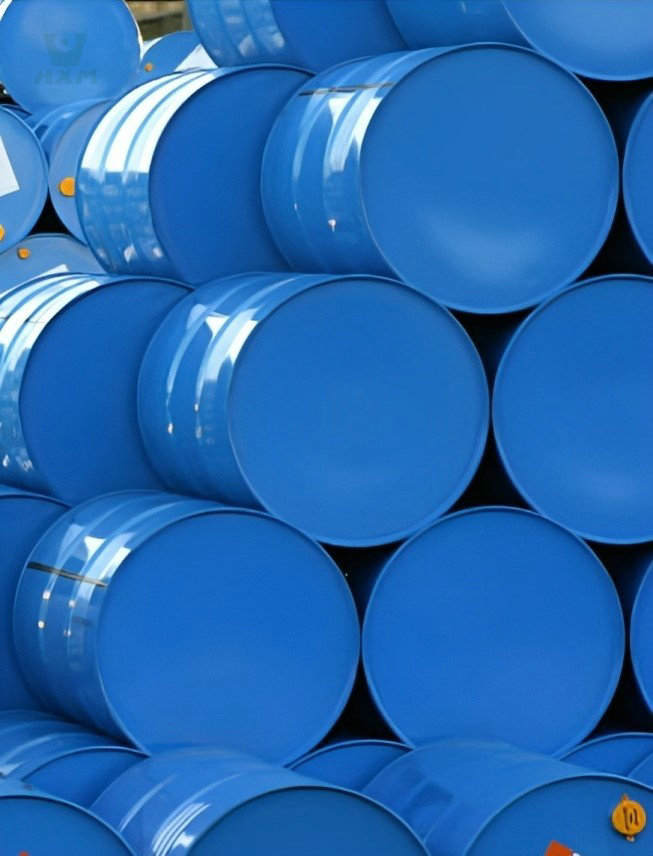
chemical industry
As a leading stainless steel strip supplier, we offer high quality 410S stainless steel strip which is widely used in the chemical industry. 410S stainless steel strip is commonly used in the manufacture of chemical equipment and vessels, such as storage tanks, reactors, heat exchangers and so on. Its corrosion resistance can resist acidic, alkaline and salt solutions, ensuring safe storage and handling of chemicals. In addition, 410S stainless steel strip is also commonly used in the manufacture of piping systems and piping fittings, such as piping connectors, flanges and valves. 410S stainless steel strip is also widely used in the chemical industry for filters, screens and distillation equipment. As a trusted stainless steel strip supplier, we are committed to providing high quality 410S stainless steel strip to meet the needs of the chemical industry.
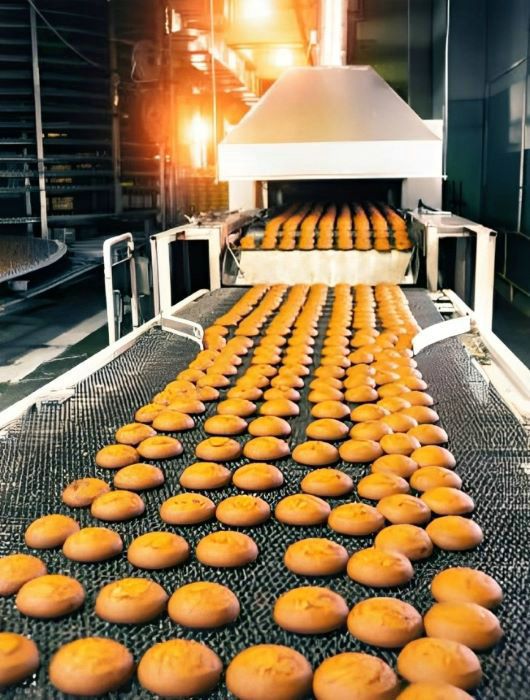
food processing industry
As a well-known stainless steel strip supplier, we offer high quality 410S stainless steel strip, which is widely used in food processing industry. 410S stainless steel strip is widely used in food processing equipment and machinery manufacturing. It is used to make parts of food processing equipment, such as conveyor belts, blades, cutting tools, etc. In addition, 410S stainless steel strip is also widely used in food storage and packaging. It is used to make food storage containers, tanks and packaging materials, such as food cans and food packaging belts. As a trusted stainless steel strip supplier, we are committed to providing quality 410S stainless steel strip products for the food processing industry.
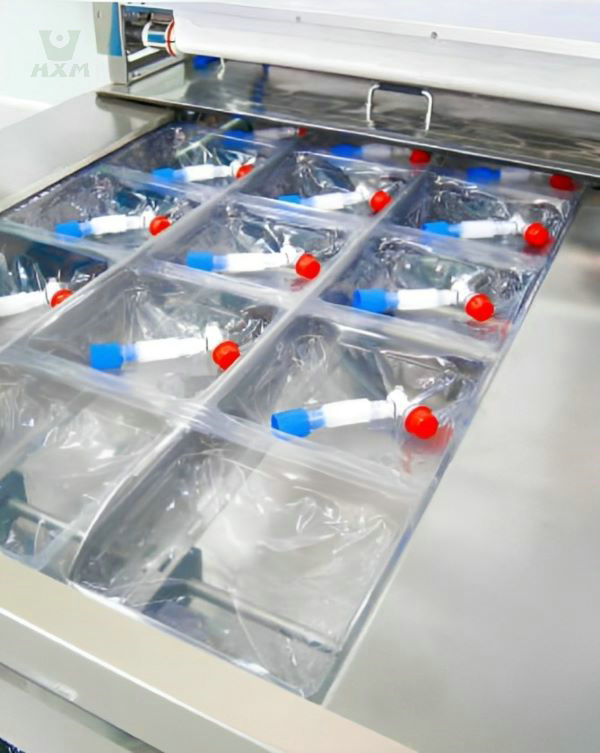
medical device industry
As a leading stainless steel strip supplier, we offer a high quality 410S stainless steel strip, which has a wide range of applications in the medical device industry. 410S stainless steel strip plays an important role in medical devices. It is used to manufacture key components of medical devices such as surgical instruments, surgical forceps, medical needles, etc. In addition, 410S stainless steel strip is also widely used for packaging and marking of medical devices. It is used to make packaging materials for medical devices, such as packaging tapes, labels and signage. Its corrosion resistance and hygienic properties make it ideal for protecting the safety and hygiene of medical devices. As a reliable stainless steel strip supplier, we are committed to providing quality 410S stainless steel strip products to the medical device industry.
FAQ
Material 410 and 410S are both types of stainless steel, but they have some key differences in their chemical composition and properties.
Chemical Composition:
- Material 410 contains a higher amount of carbon compared to material 410S. The carbon content in 410 is typically in the range of 0.08-0.15%, while in 410S, it is limited to a maximum of 0.08%.
- Material 410S contains slightly higher amounts of chromium and nickel compared to material 410. This results in improved corrosion resistance and better weldability.
Properties:
- Material 410 has higher hardness and strength compared to material 410S. It is commonly used in applications that require high mechanical properties.
- Material 410S exhibits improved corrosion resistance due to its lower carbon content. It is suitable for applications where corrosion resistance is crucial, such as in mildly corrosive environments or elevated temperatures.
- Material 410S has better weldability than material 410. Its lower carbon content reduces the likelihood of sensitization and subsequent corrosion in the heat-affected zone during welding.
Overall, the main difference between material 410 and 410S lies in their carbon content, which affects their mechanical properties, corrosion resistance, and weldability. Material 410 is preferred for applications that require higher strength and hardness, while material 410S is chosen for its improved corrosion resistance and weldability.
The main differences between 410S stainless steel strip and 316L stainless steel strip lie in their chemical composition, corrosion resistance, and mechanical properties.
Chemical Composition:
- 410S stainless steel strip contains higher amounts of chromium and lower amounts of nickel compared to 316L stainless steel strip. It typically contains about 11-13% chromium and no more than 0.08% carbon.
- 316L stainless steel strip contains higher amounts of chromium, nickel, and molybdenum. It typically contains about 16-18% chromium, 10-14% nickel, and 2-3% molybdenum.
Corrosion Resistance:
- 410S stainless steel strip offers good corrosion resistance in mildly corrosive environments, such as atmospheric conditions and low concentrations of acids.
- 316L stainless steel strip provides excellent corrosion resistance in various corrosive environments, including seawater, acids, and chloride-containing solutions. It is highly resistant to pitting and crevice corrosion.
Mechanical Properties:
- 410S stainless steel strip has lower tensile strength and hardness compared to 316L stainless steel strip.
- 316L stainless steel strip exhibits higher tensile strength and hardness, making it suitable for applications requiring greater mechanical strength.
Applications:
- 410S stainless steel strip is commonly used in applications where corrosion resistance and moderate strength are required, such as in automotive exhaust systems, heat exchangers, and decorative applications.
- 316L stainless steel strip is widely used in industries requiring superior corrosion resistance, such as chemical processing, marine applications, pharmaceuticals, and food processing.
Yes, 410 stainless steel strip is generally stronger than 316 stainless steel strip. The strength of a stainless steel strip is typically measured by its tensile strength, which refers to the maximum amount of stress the material can withstand before breaking.
410 stainless steel strip is a martensitic stainless steel known for its high strength and hardness. It contains higher levels of carbon, which contributes to its strength. The typical tensile strength of 410 stainless steel strip ranges from 450 to 600 MPa (megapascals).
On the other hand, 316 stainless steel strip is an austenitic stainless steel that offers excellent corrosion resistance but has lower strength compared to 410 stainless steel. The typical tensile strength of 316 stainless steel strip ranges from 515 to 690 MPa.
It’s important to note that strength is just one of the factors to consider when selecting a stainless steel strip for a specific application. Other factors like corrosion resistance, temperature resistance, and formability should also be taken into account.
410S stainless steel strip has some special processing and welding characteristics, as described below:
Processing Properties: 410S stainless steel strip has good plasticity and workability, and can be processed by cold working (such as cutting, bending, forming, etc.) and hot working (such as forging, rolling, etc.). It can be cut, cold bending, and forming operations under conventional process conditions.
Welding Properties: 410S stainless steel strip has good welding properties. It can be welded by common welding methods, such as arc welding, gas-shielded welding, laser welding, etc. During the welding process, it is recommended to choose suitable welding materials and process parameters to ensure the strength and corrosion resistance of the welded joints.
Post-Welding Treatment: After welding is completed, proper post-welding heat treatment or annealing treatment is recommended to eliminate stress in the welded area and improve the performance of the weld.
Avoid Overheating: During processing and welding, care should be taken to avoid excessive heating to prevent the generation of excessive intergranular carbides, which can reduce the corrosion resistance and impact the toughness of the material.
If you need to buy 410S stainless steel strips, please contact Huaxiao stainless steel strip suppliers to ensure the quality and reliability of delivery.
410S stainless steel strip can be improved and decorated by a variety of surface treatment methods to meet different needs. Common surface treatment methods include:
Pickling Treatment: By dipping in an acidic solution, such as hydrochloric acid or sulfuric acid, oxides, rust spots and impurities can be removed from the surface of stainless steel, making it cleaner and smoother.
Polishing Treatment: the use of mechanical polishing methods, such as mechanical grinding, polishing wheel, etc., can make the surface of stainless steel belt bright, smooth, and improve its decorative properties.
Sandblasting Treatment: by high-speed injection of fine abrasive particles, such as quartz sand or glass beads, can form a uniform abrasive effect on the surface of the stainless steel belt, increasing its texture and aesthetics.
Electroplating Treatment: through electrolytic deposition of thin metal layers, such as chromium, nickel or copper plating, can add a layer of metal protection on the surface of the stainless steel belt, to improve its corrosion resistance and decorative properties.
Coating Treatment: Applying a special coating or organic coating, such as polymer coatings, lacquering, etc., can change the appearance and color of the stainless steel strip while providing additional protection.
These surface treatments can be selected and used in combination to meet specific requirements and application scenarios to achieve the desired appearance, performance and functional requirements. If you need to purchase 410S stainless steel strip or are looking for a reliable stainless steel strip supplier, we recommend contacting a professional stainless steel strip supplier who can provide a wide range of surface treatment options and high quality products.
To maintain the appearance and performance of 410S stainless steel strip, the following are some recommended maintenance and care practices:
Regular Cleaning: Clean the surface of the stainless steel strip with a mild detergent and a soft cloth or sponge, avoiding cleaners containing abrasive or corrosive ingredients. Rinse with water and wipe dry after cleaning.
Avoid Scratching: Try to avoid scratching the surface of the stainless steel belt with sharp objects or hard objects to prevent scratches and damage.
Prevent Chemical Contact: Avoid contacting the stainless steel strip with strong acids, strong bases or chemicals containing chlorides to avoid corrosion and damage.
Regular Inspection: Check the surface of the stainless steel belt regularly for damage, oxidation or rust spots, and take corresponding maintenance measures in time.
Prevent Salt Accumulation: 410S stainless steel belt used in seaside or humid environment should be cleaned regularly to prevent salt accumulation and corrosion.
Avoid High Temperature Burns: Avoid placing high temperature objects directly on the surface of the stainless steel strip to avoid discoloration or deformation.
If you have questions about the maintenance and care of 410S stainless steel strip, it is recommended to consult a professionalstainless steel strip supplier, who can provide specific advice and guidance, and offer high quality stainless steel strip products.
Get In touch
Ready to Elevate Your Projects? Dive into our Stainless Steel Collection and Submit Your Specifications Today!
Phone/WhatsApp/WeChat:
+86 13052085117
Email: [email protected]
Address: RM557, NO.1388 Jiangyue Road, Shanghai China


